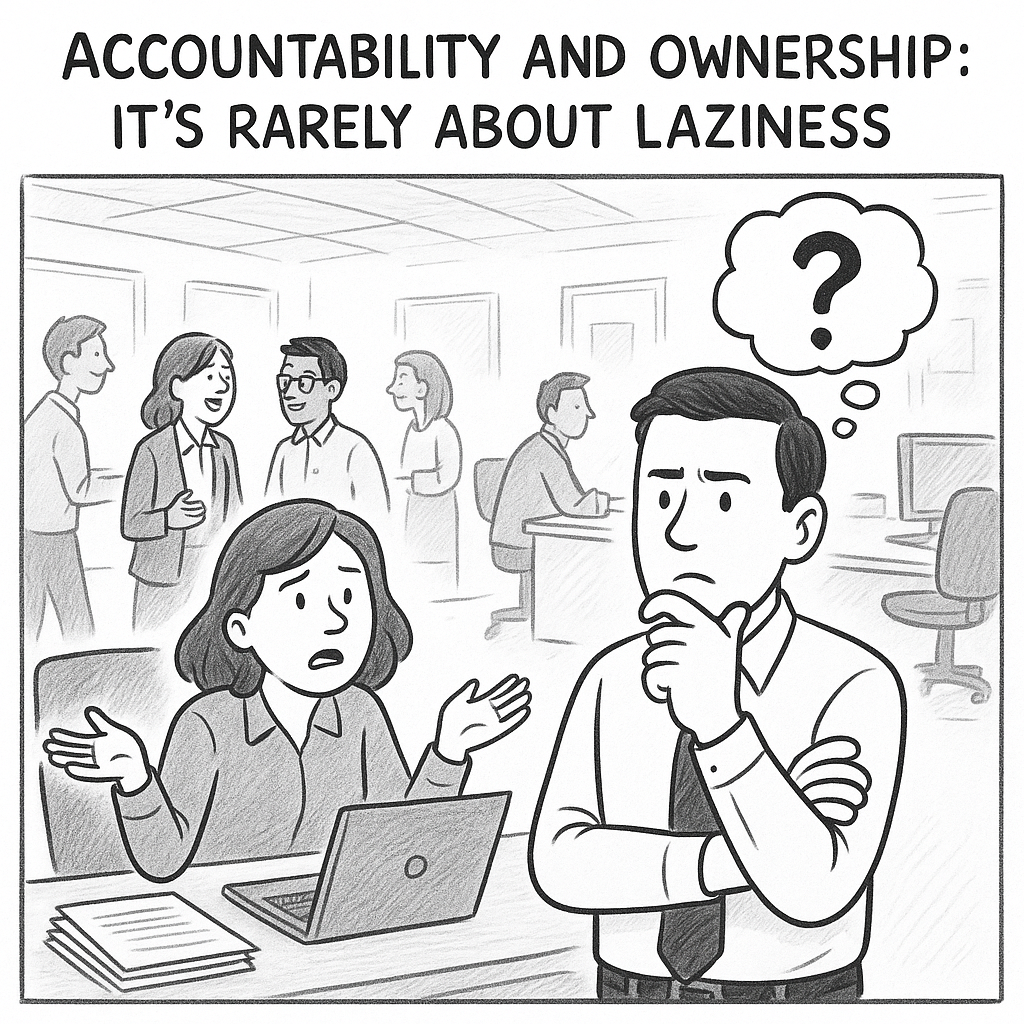Few skilled professionals show up to work each day with the intention of being unaccountable or disengaged. Most people want to do well. We want to contribute, feel valued, and be part of something meaningful. In fact, many of us thrive when we feel helpful, recognized, and trusted.
And yet, something often breaks down within organizations.
A frequent concern I hear from the leaders I work with is:
“Why aren’t my team members taking more ownership?”
“Why don’t they hold themselves accountable?”
The frustration is real and understandable. When results aren’t delivered, or initiative seems to be missing, it’s easy to assume the issue stems from laziness or incompetence. Or both. These assumptions can quickly trigger irritation, blame, or even controlling behaviors like micromanagement.
But these reactions rarely make things better. In fact, they usually make things worse.
As leadership expert Courtney Lynch puts it:
“Leaders inspire accountability through their ability to accept responsibility before they place blame.”
This shift, from frustration and blame to curiosity and responsibility, is where meaningful change begins.
Reframing Accountability
Yes, there are always outliers; people who underperform or act in bad faith. But more often, lack of ownership is a symptom, not the root cause.
Most people were hired for a reason. At some point, they showed potential, drive, and ability. So before jumping to conclusions, a more effective (and often more accurate) response is to ask: What might be getting in the way of their accountability?
Helpful Questions to Explore
If you’re noticing a drop in ownership on your team, consider reflecting on the following:
- Is this issue isolated or widespread?
Are others observing the same behavior, or is it limited to a few individuals? - Is it new or recurring?
If it’s recent, what may have changed in the environment, structure, or leadership? - How thorough was their onboarding and training?
Did they get the tools, knowledge, and cultural context needed to succeed? - Are expectations clearly communicated?
Do people know what success looks like and do they know how their work connects to the bigger picture? - How is above-and-beyond behavior recognized?
Are contributions visible and rewarded in meaningful ways? - How are mistakes handled?
Is there psychological safety, or do people fear blame and judgment? - How might your own leadership style be shaping the environment?
Are you modeling accountability, or possibly contributing to ambiguity, confusion, or fear?
Creating Conditions for Ownership
Accountability isn’t about control – it’s about clarity, trust, and support. People are far more likely to take ownership when:
- They understand what’s expected
- They feel safe enough to take risks
- Their efforts are noticed and valued
- Their leaders demonstrate responsibility themselves
Accountability, in other words, is as much a leadership practice as it is a performance metric.
Final Thoughts
Before assuming someone doesn’t care or can’t do the job, try to understand the context they’re operating in. In many cases, what looks like disengagement is actually a result of missing information, unclear expectations, or a breakdown in trust.
If you’re a leader trying to build a culture of ownership, start with yourself. Model accountability. Lead with clarity. And be willing to ask the hard, curious questions before rushing to conclusions.
Ownership thrives where people feel seen, supported, and empowered. Not where they feel judged or controlled or like their efforts do not matter.



